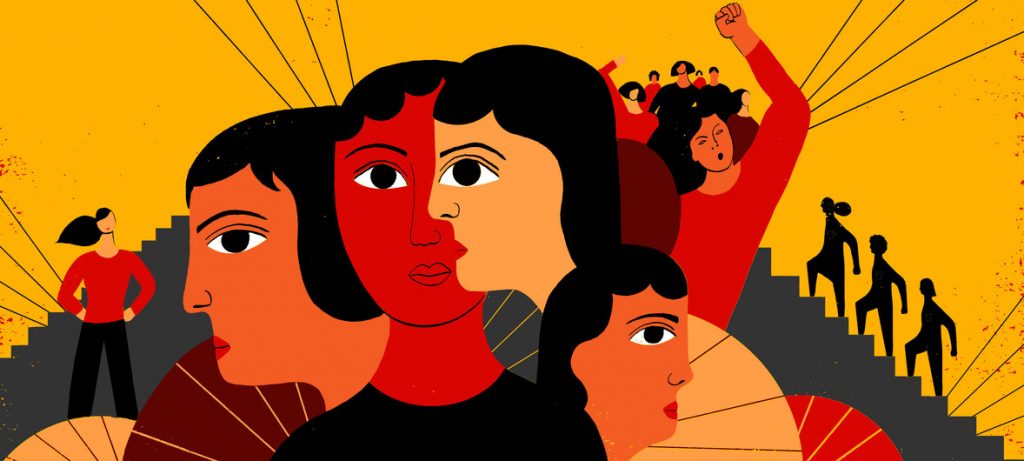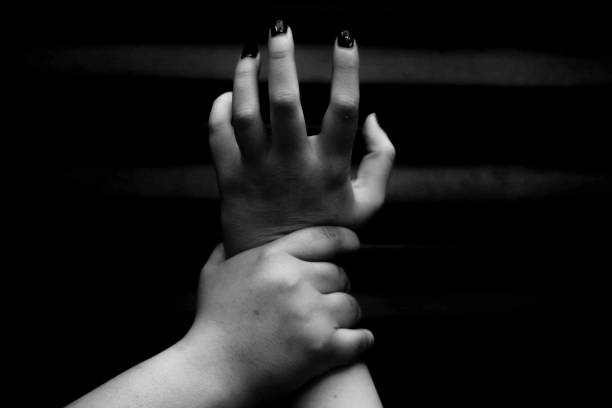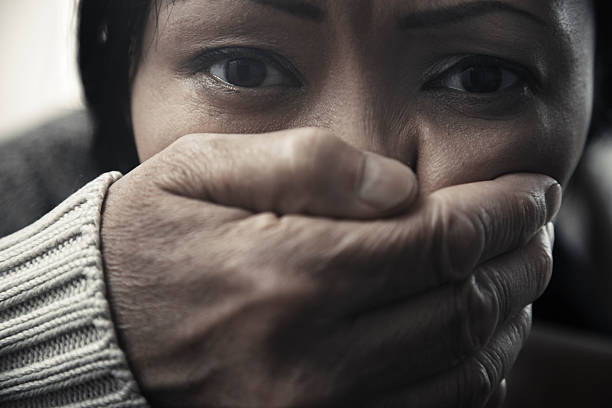
I am living in hell from one day to the next.
But there is nothing I can do to escape.
I don’t know where I would go if I did.
I feel utterly powerless, and that feeling is my prison.
I entered of my own free will, I locked the door, and I threw away the key.”
This is clearly what a person suffering through domestic violence feels. As stated by the World Health Organization, one in every three ladies over the globe encounter physical and/or sexual violence in their lifetime; and at least 30 percent of all ladies in relationships have experienced physical and/or sexual violence by their accomplices. Speaking from the Indian perspective, domestic violence is mostly inflicted on women. An Indian woman bound by so many emotions, bound by so many relations, so many duties that she always keeps others ahead of herself and there is where she goes wrong. She takes all the hurling and abuses and does not speak up due to the fear of society. She thinks that if she raises her voice it would all go against her and she will have no safe haven left for her to turn to.
But with the changing times, nobody is spared from the wrath of the evil practice of domestic abuse. Not even men, the so-called alpha gender is able to escape from this. During the time of this pandemic, the cases of domestic violence have aggravated to a very large extent. This article discusses the domestic violence which has been taking place in India during the COVID–19 era.
What is Domestic Abuse?
Domestic violence — also called intimate partner violence — happens between individuals in an intimate relationship. It can take numerous shapes, counting emotional, sexual and physical manhandle and threats of abuse. Domestic violence can happen in both heterosexual and same-sex relationships. Domestic savagery does not discriminate. Anybody of any race, age, sexual orientation, religion or gender can be a victim – or perpetrator – of domestic violence. It can happen to individuals who are hitched, living together or who are dating. It influences individuals of all financial foundations and education levels.
Domestic violence incorporates behaviours that physically hurt, stimulate fear, anticipate an accomplice from doing what they wish or constrain them to act in ways they don’t need. It incorporates the use of physical and sexual viciousness, threats and terrorizing, emotional abuse and financial hardship. Numerous of these distinctive forms of household violence/abuse can be happening at any one time inside the same insinuate relationship.
When individuals think of domestic abuse, they mainly centre on domestic violence. But domestic abuse incorporates any attempt by one individual in an intimate relationship or marriage to rule and control the other. Domestic violence and abuse are utilized for one reason and one reason as it were: to gain and maintain total control over his/her partner. An abuser doesn’t “play fair.” An abuser uses fear, blame, disgrace, and terrorizing to wear you down and keep you beneath their thumb.
Present Scenario
In spite of the fact that home is considered a secure place for some, it isn’t the safest place for everyone. In truth, with COVID-19 lockdown in place, there has been a surge in cases of household violence. All over the world, casualties of domestic violence are more helpless and at risk to a shockingly new degree of violence. Here in India, the National Commission for Women (NCW) has raised an urgent alarm about the expanding number of domestic violence cases since the national lockdown started.
In the run-up to the declaration of the nationwide lockdown on March 24th, 2020, the government fizzled to create techniques to address conceivable aftermath in a few areas. One such area that went unaddressed was domestic violence. Fuelled by mandatory stay-at-home rules, physical distancing, economic uncertainties, and anxieties caused by the pandemic, domestic violence have increased globally.
As per the numbers provided by the National Commission of Women (NCW) in mid-April, the cases of domestic violence had doubled during lockdown compared to pre-lockdown days. In 25 days between March 23 and April 16, the commission received 239 complaints, mainly through email and WhatsApp number. This is almost double the number of complaints (123) received during the previous 25 days, from February 27 to March 22. The first lockdown from March 25 to April 14 was eventually extended to May 3.
We know that women tend to confront more noteworthy dangers amid crises, counting health fiascos such as pandemics. We also know that amid times of financial hardship, there’s an increase in violent, injurious, imprudent, compulsive, and controlling behaviour and animosity directed towards cohabiting partners and romantic accomplices. Situations like these have proven the dangerous impacts of unemployment, lost pay, and financial hardship on conjugal struggle parenting quality, and child well-being.
Possible Reasons
- Frustration
The very first reason can be the frustration of being stuck in a place for a long time. We have heard for a long time now that man is a social animal and here he is trapped in a cage of social distancing. Not being accustomed to such a situation, the man of the house gets frustrated and tends to take out all his anger on the woman of the house. He is not used to be sitting idle and household work. Only some proportion of men help in household work while most of them believe that it is beneath them to do household chores. This leads to quarrelling and hence results in domestic violence. - Unemployment
The people who run businesses or work in some private institutions have almost become unemployed. Not being able to earn a living for their families and not able to even buy the necessities makes the person very tense and anger builds inside them. They have no way to take out their anger and hence start getting irritated. They think that the only possible way to let that anger out is to raise hand or hurl abuses on their counterpart.
- Working People
The household where both of the partners work have been following a lot of hardships. These households mostly have maids or servants working for them but now due to the lockdown, the maids are not available. The women are not ready to do the work on their own as they are not used to doing household work. They want their husbands to help them. Both of them are working from home so the woman feels why she should be the only one doing the household work she also has to do her work. This leads to a disagreement between the two which further leads to violence being inflicted on the partners. - Poverty
Families and couples in poverty may be more likely to encounter domestic violence, due to increased stress and clashes about funds and other aspects. A few speculate that poverty may ruin a man’s capacity to live up to his idea of “effective masculinity”. In this way, he fears losing honour and regard. A hypothesis recommends that when he is incapable to financially back up his spouse, and keep up control, he may turn to misogyny, substance abuse, and wrongdoing as ways to express masculinity.
These are possibly the reasons that the cases have increased. Not being able to fulfil one’s ambitions and dreams lead to frustration building up inside one. Being caught in a space with violent or manipulative people may lead to expanded rates and escalated dangers, physical, sexual, and mental mishandle, mortification, terrorizing, and controlling behaviour.
The capacity to confine an individual from family and companions, monitor their developments, and restrict access to budgetary assets, employment opportunities, education, or therapeutic care is heightened by a lockdown. These practices frequently have enduring impacts on individuals, and can essentially influence mental health and well-being.
Conclusion
This practice may have been prevalent for a long time but it’s high time that this practice stops. Due to being trapped in one place and spending all their day with their counterparts make them feel irritated of one another which leads to a lot of friction between the two and the end result is domestic abuse on both the genders which has devastating effects on the mental and physical well being of the people.

Reports of abused children, domestic violence, and abuse of elderly people continue to strain the capacity of police, courts, social administrative agencies, and medical centres. At the same time, myriad treatment and prevention programs are giving services to casualties and wrongdoers. In spite of the fact that constrained information exists with respect to the viability of these programs, such data is often scattered, inaccessible, and troublesome to get. If someone is involved in an abusive relationship they think that there is no way out but that is not correct.
Government has taken steps to curb domestic violence. But their implementation remains tardy, at the lower level government functionaries are not gender-sensitive. Laws pertaining to the protection of women rights and the prevention of domestic violence should be made more strict and enforced without any loopholes. The voluntary organizations are taking both preventive as well as reactionary measures. But efforts of the voluntary organizations suffer from a paucity of funds and infrastructure. According to me more educational campaigns against domestic violence should be undertaken. Women empowerment is the most welcome step as this might ensure a reduction in domestic violence. This is one evil practice which has to be done away with as soon as possible!

